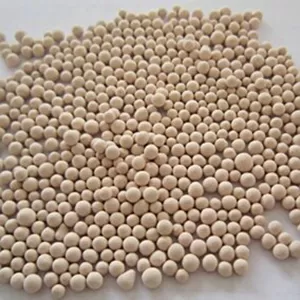molecular sieve achieves dehydration through a combination of size exclusion and polar attraction. Its crystalline structure features uniform pores (3–10 angstroms) that act as molecular gates: water molecules (diameter ~2.8 angstroms) fit easily into the pores, while larger molecules like hydrocarbons are excluded, ensuring targeted moisture removal.

Polar interactions enhance this process. The sieve’s surface carries charged sites from metal ions (e.g., sodium, calcium), which strongly attract polar water molecules through electrostatic forces. This attraction is stronger than water’s affinity for most liquids or gases, allowing the molecular sieve to extract moisture even from low-humidity environments.
In industrial systems, the packing of molecular sieve in columns maximizes contact with the moisture-laden stream. As the stream flows through the packing, water molecules diffuse into the sieve’s pores and bind to active sites, leaving the treated stream dry. Once saturated, the sieve is regenerated by heating to 200–350°C, which breaks the bonds between water and the surface, releasing trapped moisture and restoring adsorption capacity.
This principle makes molecular sieve highly effective in applications like natural gas drying, ethanol purification, and compressed air treatment, where low dew points (often below -40°C) are required. Its selectivity and efficiency outperform many desiccants, ensuring reliable dehydration across diverse industrial processes.

